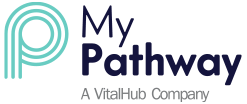MyPathway helps to manage the Waiting List for MSK department
19%
reduction in waiting list
37%
surgical patients identified as their condition worsening
43p
total cost per patient
Challenge
During the peak of COVID-19, hospitals stopped all non-urgent procedures. As a result of this, thousands of patients in the MSK department in a trust were added to a waiting list. The trust wanted to contact their patients to identify those that were at risk, likely to have a worse outcome or need more support. The trust had a large cohort of patients they needed to contact, but were unsure how to achieve this in a timely and cost effective manner.
Approach
Patients were contacted via email or SMS to "Let us know if you no-longer require an appointment" and were encouraged to register for MyPathway to manage their waiting time. Reminder SMS were sent after 3 days if no response via MyPathway, then a letter was sent after 5 days if no response (the letter included a pre-paid return envelope as letters required patient to return a paper copy of their response). Once registered, patients were sent out an initial message informing them that they will be contacted soon and directed towards self-help resources whilst they waited to be contacted. They were then sent a questionnaire of whether they would still like their appointment and asked if they felt better/the same/worse, so that patients could be re-prioritised. If they answered yes, they still required an appointment, they were added to the waiting list and if they responded no, they were required to give a brief explanation as to why and they would then be discharged.
Results
- 66% of patients responded via MyPathway
- 7% of the surgical patients and 12% of the therapy patients confirmed that they no longer wanted an appointment
- 37% of surgical patients and 16% therapy patients reported being worse
- Total cost of the pathway was 43p per patient
What happened next
A waiting list management pathway for hand surgery patients has now been rolled out. The Trust is anticipating a lower “self-discharge” rate amongst this group but the aim is to identify the patients in most need and to prioritise their care.
